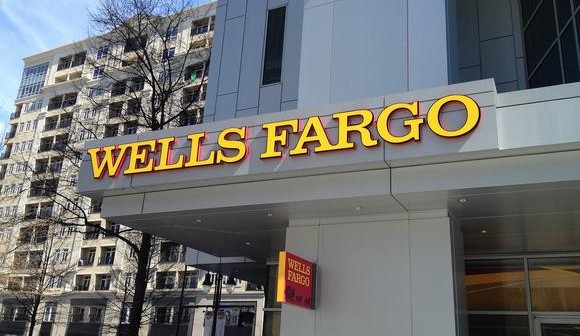Quantitative easing comes into play in order to stimulate the economy, when the standard monetary policy is ineffective. It follows a certain procedure in which central bank purchases certain financial assets of a bank or a private institution, raising its price and decreasing its yield, which helps to increase the monetary system. But exactly how successful this method is, remains unknown. Some companies benefit from it, while others not so much.
But one company that has one too many reasons to love the quantitative easing is Wells Fargo (NYSE: WFC). It is a multinational banking and financial services company based in US. It is also known as a mortgage originator. The company is depended on central bank to take measures to cater to the housing market and further quantitative easing was an icing on top for Wells Fargo (NYSE: WFC).
Wells Fargo (NYSE: WFC), back in 2009 started buying mortgage backed securities worth billions, with an aim to impact and decrease MBS yields eventually leading to lowering mortgage rates.
During the third and last time quantitative easing was in play, the Federal Reserve bought 29% of all the agency MBSes, produced by Fannie Mae and Freddie Mac. These proved to be beneficial in the long run, as the 30 year fixed rate of mortgages fell from 6% in 2008 and were further down to 3.4% by 2012.
These drops didn’t seem to have much notable effect on the overall housing market, but the mortgage market took full advantage of the dropping rates. This will give food for thought to homeowners, to refinance the existing loans. Before 2009, mortgage played a vital role of 40 to 50 % in home purchases, but after the rate dropped, the procedure reversed. At the time of these changes, much was happening in the housing market, like the rise in foreclosures and delinquencies, so this was considered a blessing for many banks. Reason for it is that mortgage lenders start producing non-interest income of loans. Which started embedding them into fixed income securities and then selling them out to institutional investors. At that point, Wells Fargo (NYSE: WFC) was in a position to take advantage as it hands out a third of all mortgages that are taken with in the US market. Mortgage applicants have requested to refinance, from 2009 to mid-2013, as the share stood closers to 50%.
Within the same time frame, it earned $32 billion from sale and origination of mortgages. This was a result of the Fed’s aggressive approach to lowering interest rates, which eventually gave Wells Fargo (NYSE: WFC) over 6 billion reasons to thank the quantitative easing system. Wells Fargo (NYSE: WFC)’s approach to process requests of refinance led to the company’s strong lead in the mortgage market and produce an income stream through monthly services on the refinanced home loans.
Regardless of the arguments against quantitative easing, there is no doubt the benefits it provided for Wells Fargo (NYSE: WFC) with in the last 5 years and for years





Pingback: eaafirearmsusa.com
Pingback: u31 com
Pingback: สอนแทงบอลออนไลน์
Pingback: white cherry runtz for sale
Pingback: hihuay
Pingback: https://loopsdesignerlab.com/wp-content/uploads/2016/06/7475.html
Pingback: it's here
Pingback: bio altogel
Pingback: Jaxx Liberty
Pingback: altogel
Pingback: PGSLOT ฝากถอนวอเลท ไม่ต้องง้อธนาคาร
Pingback: ของพรีเมี่ยม
Pingback: THWIN9
Pingback: click here
Pingback: แทงบอล ราคาบอล 0.75 น่าลงทุนหรือเปล่า ?
Pingback: บาคาร่า All รวมค่ายบาคาร่าลิขสิทธิ์แท้
Pingback: pgslot
Pingback: 1xbet application
Pingback: กุยช่ายนครนายก
Pingback: เว็บตรงฝากถอนง่าย
Pingback: ห้องพักรายเดือนศรีราชา
Pingback: click here
Pingback: แทงหวย
Pingback: ทัวร์ลาว
Pingback: LSM99 เว็บหวยออนไลน์ อันดับ 1
Pingback: clothing manufacturer
Pingback: Go X scooter app
Pingback: รับทำเว็บไซต์
Pingback: บาคาร่าเกาหลี
Pingback: 롤드컵토토
Pingback: Book of Ra Slot